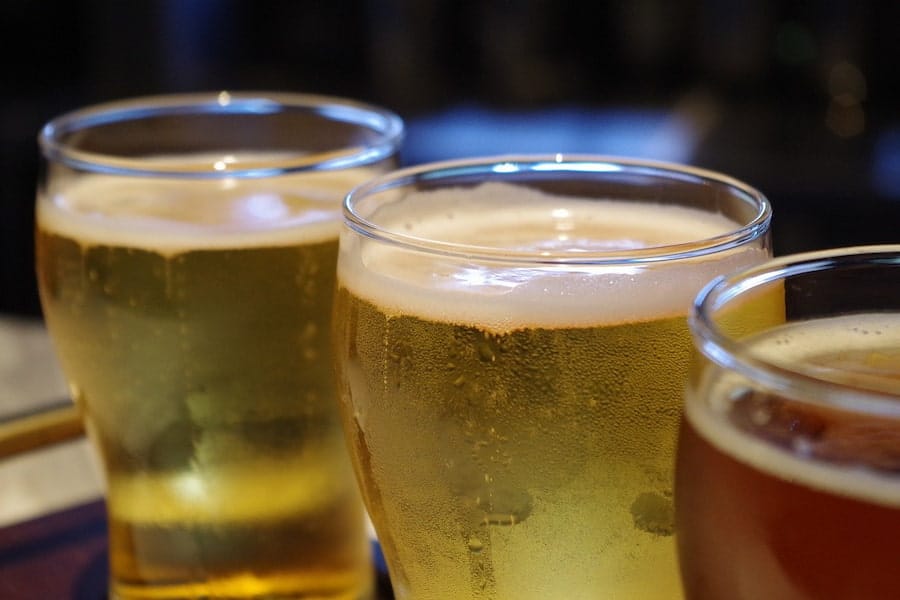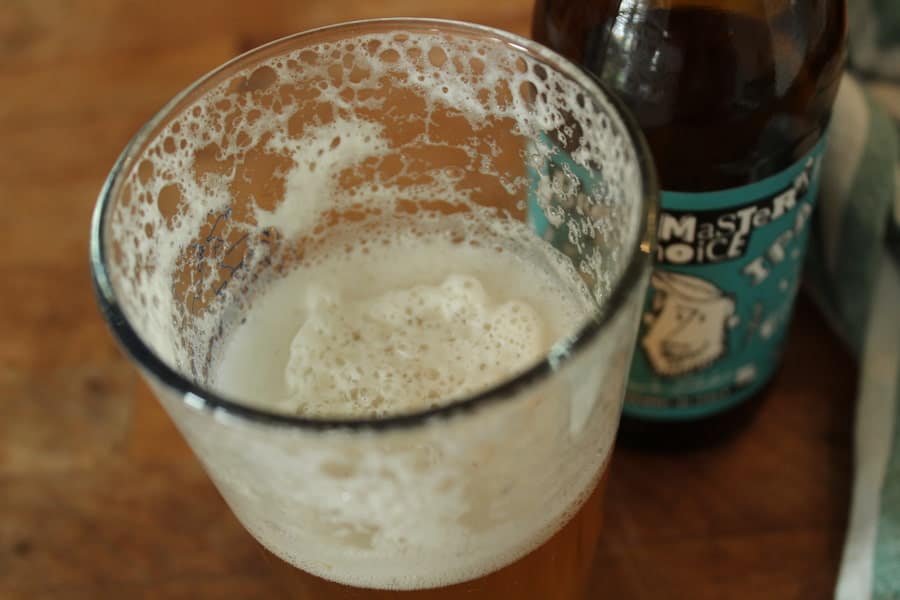If you buy something through a link in our posts, we may get a small share of the sale.
Fermentation is a weird process that can kick up different strange debris, making it challenging to know whether the beer is infected or not. It becomes difficult to know whether the beer contains harmful yeast or bacteria by its looks. It is even more challenging when the bacteria infecting the beer doesn’t affect its looks.
Fortunately, here is how to tell if your beer is infected or not.
How to Tell if Your Beer Is Infected
The most challenging step for most beginners is when the fermentation process is complete. Look through the glass or open up the fermenting vessel only to see yeast rafts and debris floating on the beer’s surface, and they can’t tell whether the beer is infected. Even experienced brewers still get one or two beer infections in their brewing journey.

Typically, a beer infection occurs when there is an increase in wild yeast or harmful bacteria to a level that can cause spoilage. Keeping in mind that you’ll be brewing in home conditions and not in a laboratory, there are high chances of contamination during the brewing process.
However, the presence of wild yeast and bacteria will have a different impact on your beer. Here is how the impact of wild yeast and bacteria can vary:
- Trace amounts: It means your yeast management, sanitization, and OCD cleaning is good, and the presence of wild yeast and bacteria is minimal. You cannot notice the presence of wild yeast and bacteria in this beer, and the taste is good.
- Medium amounts: It means the presence of wild yeast and bacteria is relatively high, and you can note it. The beer is still drinkable, but you can feel something is not right.
- High amounts: The amount of wild yeast and bacteria is so high that this beer doesn’t have redeemable features.
You can use campden tablets to kill bacteria and inhibit the growth of wild yeast if needed.
Fortunately, some signs can tell you how much wild yeast and harmful bacteria are present in your beer and that your beer has an infection. Here are some things you can look at during the fermentation process to know whether your beer has an infection or not.
Pellicle
The pellicle is a beer infection resulting from contamination by harmful bacteria. You can know your beer has a pellicle infection if you have a fine layer of chalky white substance covering its surface.
If the beer is still tasting okay, consider bottling it immediately and drinking it earlier rather than having to throw it away. However, if the beer is too sour, it is advisable to throw it away as there is no way you can improve its condition.
Mold
If you see blue, green, or white dots forming on top of your fermenting beer, it is a sign of mold infection. However, it doesn’t mean that you go ahead to throw away your beer if you see some mold growing.
Things can get, either way, so give it time to complete the fermentation if the process is nearing its end. Draw some samples from under the surface. If the taste is fine, the beer might be fine for consumption. It means you don’t have to dispose of the beer, but rather, remove the mold forming on top.
Sanitize a spoon and then gently scoop off the mold forming on top of the fermenting beer. Reseal the fermenting vessel and allow the fermentation process to continue as usual. However, if the taste is unpleasant or too sour, throw it away.

The Final Gravity Reading Is Much Lower Than the Expected Value or Over Attenuation
Some of the harmful bacteria and wild yeast in your fermenting beer can ferment some sugars that the yeast strain you are using to brew cannot. This fermentation leaves you a beer over attenuated, and it can be an indication of a lurking bug in your brewing equipment.
If you don’t solve this problem immediately, you notice it, it can lead to total spoilage of the beer, and you might have to throw it away. If you see signs of a lurking bug in your brewing equipment, replacing all soft rubber parts such as seals and hoses is advisable. Passionately work on your remaining brewing equipment with StarSan, boiling water, and PBW.
Hand Grenades and Gushers
It is possible to bottle an infected beer unknowingly. The behavior of the beer after bottling can be an indication of an infection. The attenuating powers of the harmful microbes as they continue fermenting the sugars inside the bottle.
In most cases, this fermentation results in gushers and explosions. Remember that gushers and explosions can be dangerous, and you need to be extremely cautious when handling them.
Bad Taste
Even when there are no visible indications of infection, the taste can make you know that the beer is infected. If you feel sour, buttery, or vegetative notes in your beer, there are chances that your beer is infected.
Like the over attenuation issue, you can solve this problem by stepping up your sanitization, cleaning, and replacing rubber parts.

Frequently Asked Questions
Can I Drink an Infected Beer?
There is no hard rule on whether to dispose of or drink an infected beer. However, it is advisable to throw it away if it tastes disgusting, looks slimy, or smells awful. If it has an infection but still tastes good, you can either drink it or throw it away.
Is It Possible for the Bacteria to Grow in Beer?
Out of thousands of bacteria species and genera, only a few species can survive and grow in beer. The species associated with beer include the Zymomonas, Pectinatus, Pediococcus, Obesumbacterium, lactic acid bacteria, and acetic acid bacteria.
Why Does the Beer at the Bottom Taste Bad?
The beer at the bottom might taste bad because of temperature changes, making the bad taste more noticeable when warmer. There might be a particulate matter or yeast resting at the bottom of the container, changing the beer’s taste at the bottom. The loss of carbonation at the bottom might also affect beer taste.
Final Thoughts
You can prevent beer infections by properly cleaning and sanitizing your brewing equipment. However, even with the best cleaning and sanitization, you’ll still get beer infections from time to time. With the above guide on how to tell if your beer is infected, you will be able to identify an infection and take the appropriate measures.

